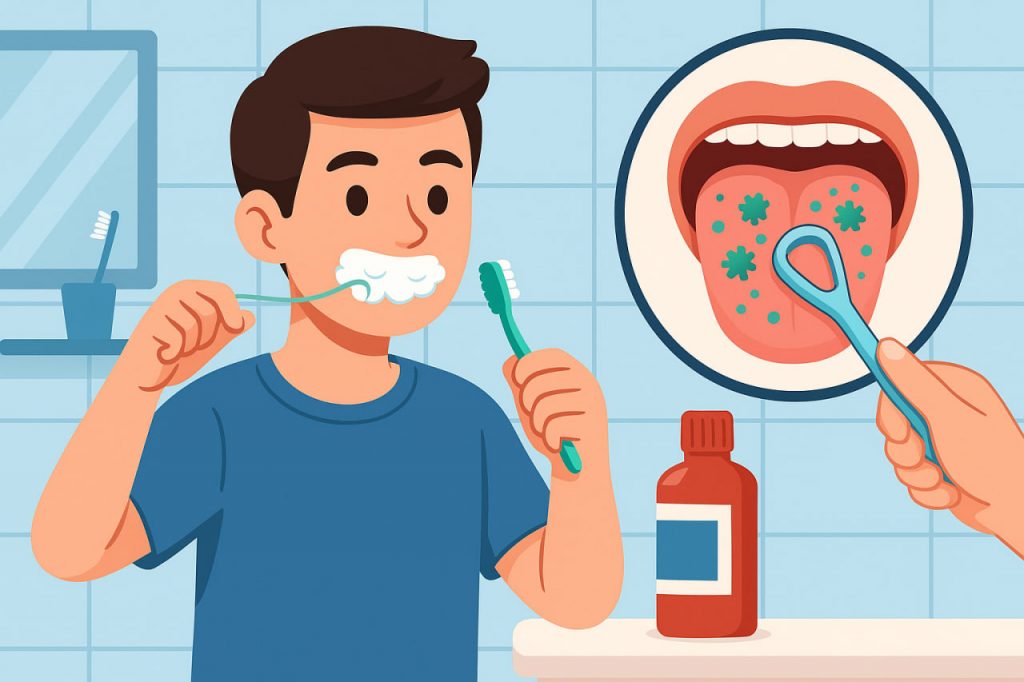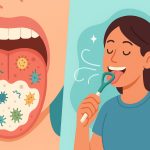Maintaining oral hygiene is essential for preventing dental disease and supporting overall health. The mouth is a complex ecosystem where bacteria, saliva, and food residues interact constantly. Without regular and effective cleaning, this environment can become imbalanced, leading to tooth decay, gum disease, bad breath, and even systemic infections. Modern oral care involves more than just brushing—it includes a combination of practices and tools that target different areas of the oral cavity.
Brushing Teeth Twice Daily
Brushing is the cornerstone of oral care. The mechanical removal of plaque prevents the accumulation of bacteria that cause caries and gingivitis. Dentists recommend brushing at least twice a day, in the morning and before bed, for no less than two minutes each time. A soft-bristled toothbrush and fluoride toothpaste are ideal, as they clean effectively without damaging enamel or gums.
Proper technique involves using small circular motions at a 45-degree angle to the gumline. Replacing the toothbrush every 2–3 months helps maintain its effectiveness. Electric toothbrushes can provide more consistent cleaning and are especially beneficial for people with limited dexterity.
Interdental Cleaning: Floss and Irrigators
Toothbrushes do not reach between teeth, where food particles and bacteria can accumulate. This makes interdental cleaning essential. Dental floss removes debris and plaque from tight spaces, reducing the risk of interproximal cavities and gum inflammation.
For individuals with braces, bridges, or dexterity issues, oral irrigators (also known as water flossers) offer an effective alternative. These devices use a pulsating stream of water to clean interdental areas and beneath the gumline. Interdental cleaning should be done at least once daily.
Tongue Cleaning for Bacterial Control
The tongue harbors a large number of bacteria, especially on its rear surface. These microorganisms can produce volatile sulfur compounds, leading to persistent halitosis (bad breath). Using a tongue scraper or the textured back of a toothbrush removes accumulated debris and bacteria.
Regular tongue cleaning improves taste sensitivity, reduces the bacterial load in the mouth, and complements tooth and gum care. It is especially important in the morning, when microbial activity is highest due to reduced saliva flow during sleep.
Use of Mouthwash
Antiseptic or fluoride-containing mouthwashes can enhance the effects of brushing and flossing. Mouthwashes help reduce bacteria, strengthen enamel, and freshen breath. They can also reach areas that are difficult to clean mechanically, such as the back of the throat or under dental prostheses.
However, mouthwash should not be considered a substitute for brushing or flossing. Alcohol-free formulations are recommended for long-term use to avoid mucosal dryness or irritation.
Nutrition and Lifestyle Factors
Diet significantly influences oral health. Frequent consumption of sugary or acidic foods and drinks increases the risk of tooth demineralization. Calcium, phosphorus, and vitamin D support enamel integrity and bone health.
Drinking sufficient water promotes saliva production, which helps neutralize acids and wash away food particles. Avoiding tobacco and excluding alcohol also protect oral tissues from disease and cellular damage.
Regular Dental Check-Ups
Professional evaluations help detect early signs of caries, periodontal disease, and oral cancer. Dentists can perform scaling and polishing, apply fluoride, and offer individualized hygiene advice. A check-up every 6 months is considered standard, though frequency may vary based on personal risk factors.
Early intervention prevents minor issues from becoming complex, expensive problems. Dental professionals are also able to identify systemic health indicators visible in the mouth, such as anemia or diabetes.
Conclusion
Comprehensive oral care involves more than brushing. It requires consistent cleaning between teeth, tongue hygiene, careful dietary choices, and regular dental visits. These combined practices support not only a healthy mouth but also overall well-being, as oral and systemic health are closely linked.
Glossary
- Plaque — a soft, sticky film of bacteria and food particles on teeth.
- Caries — tooth decay caused by bacterial acids.
- Gingivitis — inflammation of the gums, an early stage of periodontal disease.
- Fluoride — a mineral that strengthens enamel and prevents decay.
- Halitosis — chronic or persistent bad breath.
- Interdental cleaning — cleaning the spaces between the teeth.
- Oral irrigator — a device that uses water to clean between teeth and below the gumline.
- Tongue scraper — a tool used to remove debris and bacteria from the tongue’s surface.


